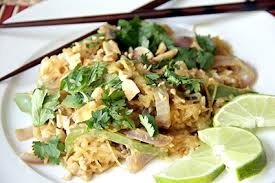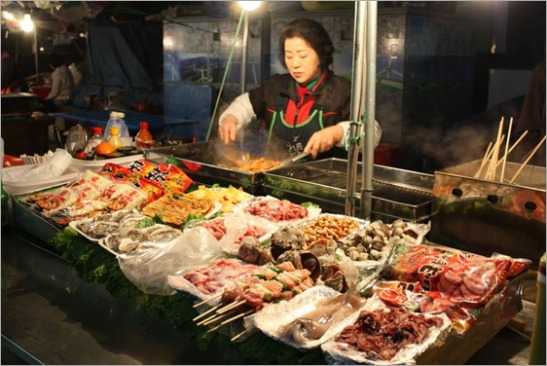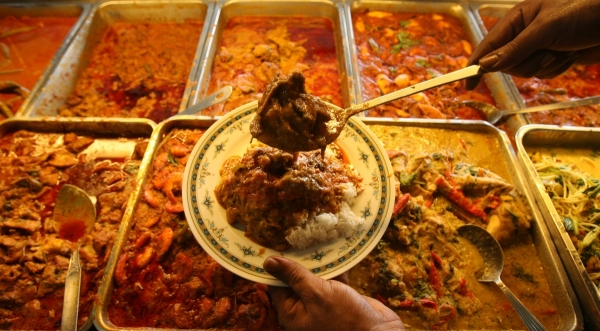Nu pierdeți cele mai bune locuri de muncă!
Abonează-te și săptămânal iți vom trimite un email cu ultimele locuri de muncă disponibile. Introdu adresa ta de email mai jos
Whether you’re at a restaurant or trying to navigate the local markets for something edible, dealing with foreign food can be tricky. We come across some interesting meal options and strange ingredients while we are travelling abroad, but that’s no cause for alarm. There are several ways that you can make your tummy feel terrific, most of which won’t break the bank like special ordering your native comfort food all the way to your new home would.
Many people see travelling as an opportunity to eat and experience and while there are cheap options all over the world, eating out adds up and before you know it, half of your budget is gone.
Find the Right Restaurant
Rather than eating at the first restaurant that you find, stroll around and look at a few different menus and prices. There are certain aspects that can make restaurant prices rise, such as atmosphere, where they source their ingredients from and the overall quality of the restaurant. Restaurants have different audiences that they are trying to appeal to; so some might be more upper class tourists while others are more for the local population. However, white table clothes and small portions of food for high prices is not the way to make your travel budget last. Walk around the area where all the restaurants are and you might find your favourite dish costing 50% less at the hole in the wall restaurant over the main street chain establishment.
Keep the Drinks Simple
Opt for more simple beverages compared to the pricey cocktails and stick to glasses of water wherever the tap water is clean enough to drink. Even soda and beer, which can be relatively cheap, can add up if you have one with every meal.
Check out the Hole in the Wall
Make the most of your travel experience (and save your wallet) by heading to the authentic hole in the wall restaurants that serve extremely cheap and usually surprisingly delicious food. Some tourists choose to avoid these establishments because they can be more rugged (or dirty) compared to tourist-based restaurants and the employees may not speak your language since they are aimed at a more local demographic. However, eating the way the locals do will give you a chance to sample some genuine dishes made for the locals by the locals and save your money.
Bring on the Carbs
When assessing the menu, look for items that will fill you up for the least amount of money as possible. Gourmet restaurants have a knack for charging exorbitant prices due to the high quality of the ingredients, but what actually arrives on your plate is little more than would fill up your pet gerbil. Look for bread, rice and pasta based dishes that have a lot of carbs that can fill you up for longer.
Eat Local
Eat local dishes rather than at places that serve foreign food. Pizza in Thailand, sushi in Brazil, or gyros in India are all going to cost more than if you ordered traditional meals that don’t require unusual ingredients for the region. Mee Goreng in Indonesia can cost only about 20 IDR, which is only $1.6 USD, but ask for a bacon cheeseburger and you’ll be looking at about 100 IDR in some establishments.
Street Markets and Food Vendors
Skip the sit down meal and take a walk through the food vendors and street markets where are you will be able to experience the local cuisine in all its glory. Food like skewers, dumplings, plates of rice and pasta, and all forms of deep fried food possible make common appearances in street food markets. There is such a wide range of food choices, and all very cheap. In Thailand, a barbeque lemongrass chicken skewer only costs 1 Thai Baht, or a deep fried ham and cheese sandwich costs only 5 Thai Baht. Street food markets have a global presence and might be your saving grace when your tummy starts to rumble but have limited funds.
Complimentary Meals
Certain hostels, hotels and bed & breakfasts offer a complimentary breakfast when you stay at their establishment. Absolutely take advantage of every free meal that comes your way, even if it is just a snack. The free breakfast is usually buffet style so if you don’t have time to sit down and eat, grab a muffin and banana and save them for later. Hostels sometimes host community dinners where everyone works together to prepare the meal and sits together as well.
Cooking at Home
Although you will still have to buy ingredients, cooking at ‘home’ is still going to save you a fair amount of funds. Skip on the truffle oil or expensive cuts of meat and use simple ingredients like bread, pasta, rice and vegetables to make yourself a satisfying sandwich or a hearty stir-fry. Oils and liquid seasonings can add weight, along with the risk of spilling and challenge TSA liquid restrictions, but bringing along a travel sized spice rack could be just the solution for adding a little flavour to your dish.
Bring It Along
Investing in some Ziploc bags could save you a great deal of money. Keep yourself fuelled up all day by packing nutrient rich snacks such as trail mix or a simple sandwich.
Buffets
Most buffets, especially the all-you-can-eat ones, are relatively affordable and give you as much bang for your buck as possible! Rather than ordering and paying for just one portion, you can fill up on as much food as you can fit on your plate and be set for most of the day. Buffets usually have a plethora of options as well, which means you can try an assortment of dishes or if you are a picky eater, you’ll be bound to find at least one dish you can try.
Refill Your Water Bottle
Many people don’t realize that they are actually thirsty instead of hungry. Exploring a new culture can cause many of us to get dehydrated without even realizing it and we channel those feelings into hunger. Before you get ready to spend money on food, take a gulp of water and see if that quenches your hunger pains. Buying several bottles of water adds up on your budget and on the environment, so bring along your own water bottle that you can refill throughout your trip.
Sign in to publish a comment




Be the first to comment on this post.